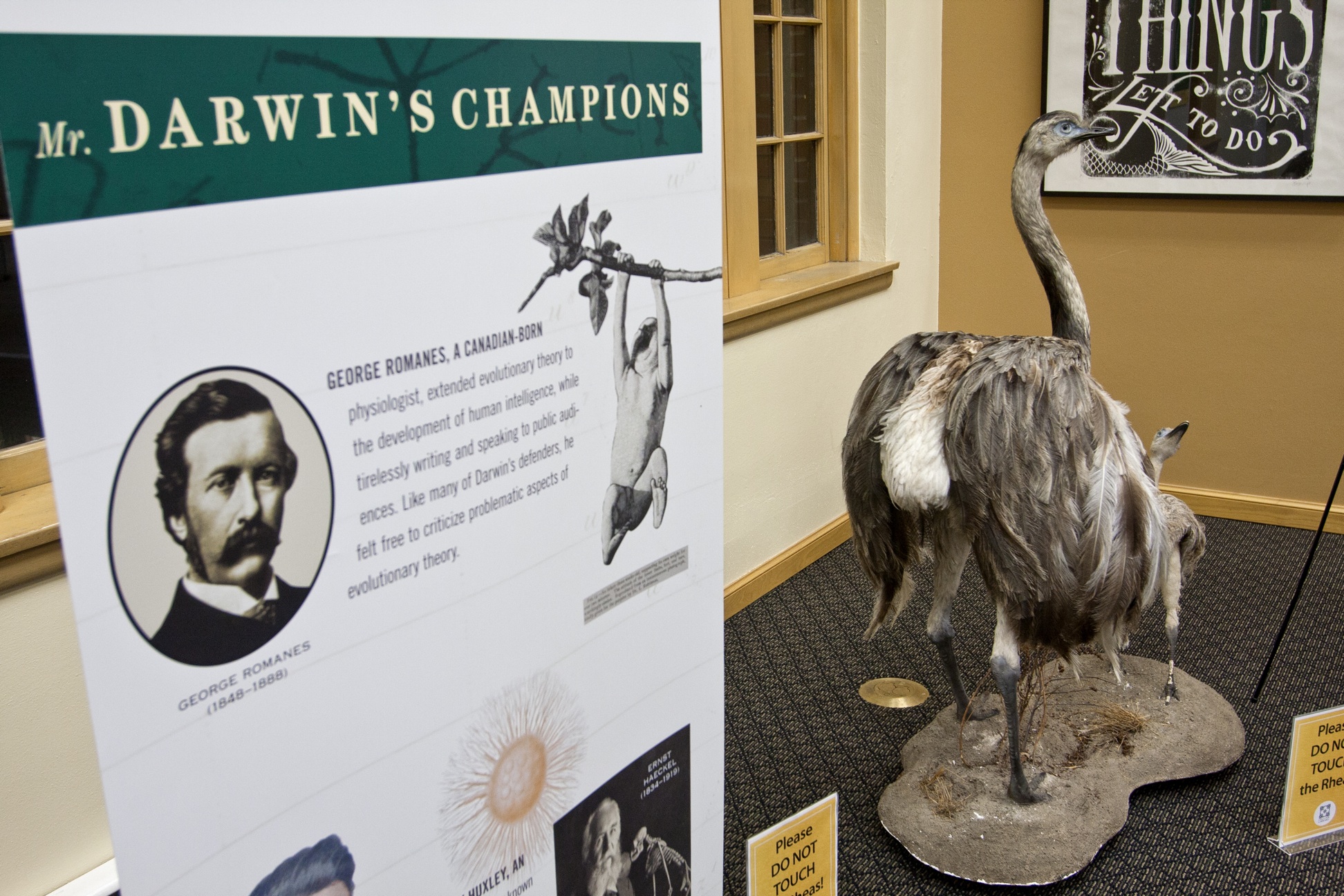
You may have noticed a large stuffed bird hanging around the library. In case you were wondering, it is called a Rhea, and it’s one of the species that caused Charles Darwin to question the belief that animals were created perfectly.
The Rhea’s flightless wings were one of the reasons that pushed Darwin toward forming evolutionary theory and writing On the Origin of Species, which brought into question popular beliefs at the time and, whether correct or not, affected how we study science today.
This month’s library exhibit may have piqued your interest, but perhaps you haven’t yet taken the time to take a good look around. Maybe biology isn’t really your forte, but the good news is that this exhibit isn’t just for science majors.
The exhibit is called “Rewriting the Book of Nature: Charles Darwin and the Rise of the Evolutionary Theory,” and it features posters from the National Library of Medicine exhibit and specimens from the Slater Museum supplemented by books from our very own library. It will be open through Dec. 9.
Rebecca Kuglitsch, Puget Sound’s science librarian, had an integral role in bringing the exhibit to the library, and she’s excited about how interdisciplinary it is.
“Evolution is an idea that’s been important in so many fields, from biology to political thought to history,” she said. “Not only is it fascinating to see how this idea was developed and how it was taken up by both scientists and society, this is also an area that our curriculum covers extensively … We really like that we can tie into and reinforce the intellectual energy that is already going on on campus.”
The exhibit is also comprehensive. It explains Darwin’s theories, features Alfred Russell Wallace—Darwin’s contemporary who contributed to the idea of evolution in Malaysia—and addresses the social impact of evolutionary theory.
Professor Kristin Johnson, who composed some of the text giving history on the theory of evolution, highlighted the importance that the exhibit places excerpts from On the Origin of Species next to corresponding specimens. Kuglitsch said that seeing the actual specimens really brings the concepts to life.
“These sources carry all kinds of information that’s not always apparent from a secondary source. For example, I’ve read about sexual dimorphism in birds, seen pictures, noticed it in life and from a distance. But it’s a much more vivid idea to me when I can look really closely at several bird specimens, and see, up close, the differences,” Kuglitsch said.
Kuglitsch believes that the primary sources in this exhibit and other exhibits can help Puget Sound students to form informed opinions.
“One of the reasons people choose a liberal arts education is to really engage closely with ideas and develop their own interpretations and theories, so while I think anyone in university can benefit from working with primary sources and historical objects, it seems especially appropriate for the liberal arts context,” she said.
Kuglitsch pulled books from the library to include in the exhibit on how different people have applied Darwin’s theories to society. Different books illustrate different ways to think about evolutionary theory. Although this exhibit includes a wealth of information, Johnson said that it only “just skims the surface”.
She encourages students to explore the topic even further. Johnson directed me to the Darwin Correspondence Project at www.darwinproject.ac.uk/, which is a digitalized version of all of Darwin’s correspondence. In addition to the exhibit, Elizabeth Knight, who went to the Galapagos to set up archives at the Charles Darwin Center, will be hosting a brown bag lunch on Wednesday, Nov. 28 from 12 to 1 p.m.
If you want to learn more about Charles Darwin, or if you just want to behold the glory of exotic animals (they have a sloth), this exhibit is right at your fingertips in your local Collins Memorial Library.
PHOTO COURTESY / CHRIS PUTNAM
